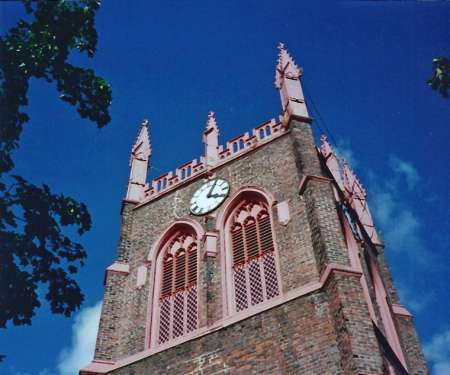St Michael in the Hamlet with St Andrew. Toxteth Park Liverpool
Even before St George’s Everton, was finished John Cragg had begun work on what was to become St. Michael in the Hamlet. He contracted for the land in February 1813 and the church was completed in June 1815. It used many of the same castings and mouldings as St. George's and was built at Cragg's own expense. The total cost was £7,865.
While St George's was stone clad and from the outside looks conventional, St Michael’s employs the extensive use of cast iron on the outside of the building The pinnacles on the tower and along the roof as well as the window frames and door jambs are of cast iron. The walls are of brick but originally these were covered on the outside with stucco to resemble stone. Slate was used for the outer roof, the inner ceiling and the interior panelling. Because of the pre casting of the various pillars and arches etc, the same pieces occur in different forms and uses. For instance, the mouldings below the clerestory windows were also used as fireplaces and an example of this exists behind the door giving access to the stairs leading up to what was once the gallery. The ornamental tracery on the ceiling looks like plaster-work but is in fact another example of Cragg’s ironwork.
The versatility of these prefabricated arches, window frames and door mouldings is shown in their repeated use in the five houses which John Cragg built near the church. The use of so much iron in the neighbourhood led to the name of the Cast Iron Shore being given to the nearby banks of the River Mersey.
